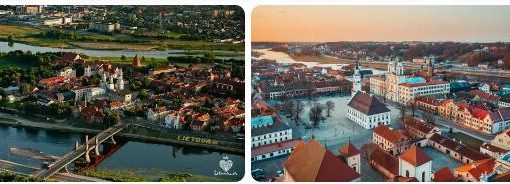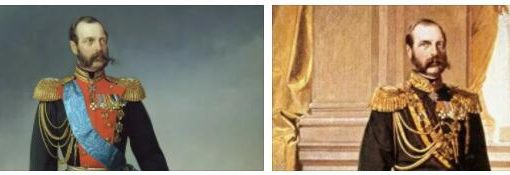The year 1949 begins under the signs of a profound uneasiness that characterizes the minor democratic groups allies of Christian democracy in the four-party experience of government. President De Gasperi had formed, after the elections of 18 April 1948, a real coalition with the liberals, the social democrats and the republicans; but the ferments of criticism and revision that stir up those political groupings do not seem to subside, at the very moment in which, within the DC, the contrasts between the traditional center and the new left led by G. Dossetti, d ‘ social inspiration and not without fundamentalist points. In January, B. Villabruna assumes the secretariat of the PLI, the party of which the then President of the Republic, L. Einaudi, was a member. Thus ended the center-right liberal experiment embodied by R. Lucifer and which had translated, in the consultation of 1948, into an alliance with the remains of the indifferent party (not very productive of votes for the liberal party). At the same time, the new secretary began conversations for the unification of the liberal forces with the exponents of the liberal left who had abandoned the PLI after the 1947 congress: the group that most strongly feels the call of the secular tradition and places conditions for the extension of government collaboration. with Christian Democracy.
A similar phenomenon occurs on the social democratic side. An extreme attempt at socialist unification aims to heal the consequences of the alliance between socialists and communists sanctioned by the “Popular Front” of 1948 and to bring the PSI back into the democratic area. It is interpreted by one of the old exponents of the Turatian and Piedmontese tradition, G. Romita. But his effort was quickly disavowed by the leadership of the PSI, where currents opposed to close ties with communism are now in a clear minority.
The test of indecision and internal turmoil in the ranks of the PSI induced the group of Social Democrats headed by Giuseppe Saragat (then united under the banner of the PSLI) to overcome all the perplexities and reservations caused by their remaining in government. At the end of January 1949, the PSLI congress in Milan sanctioned by a large majority the line of democratic collaboration assumed by the group resulting from the split of 1947. President De Gasperi was very particular about this collaboration, to avoid the isolation of the DC towards the right and maintain an open dialogue with the democratic and autonomist forces of socialism.
On the new great problem of Italian politics, that of Italy’s accession to the Atlantic Pact, the contrast between the two socialist parties is now definitely deepening (and now we can speak of three: since the secessionists of the PSI chaired by G. Romita gradually organize themselves into a political group). After a series of “cases of conscience”, moreover understandable in the light of the neutralist tradition of Italian socialism, the party led by Saragat accepts the thesis of Italy’s inclusion in the bloc of Atlantic nations, albeit accentuating the defensive interpretation of the “pact”. On the other hand, the Romita group moves along a line of prudent waiting; while the PSI takes sides on a level of absolute opposition,
In May 1949 the national congress of the PSI in Florence sees the prevalence, over the surviving autonomist currents, of the so-called “fusionist” current determined to bring to the extreme consequences (theoretically also to the “fusion”) the collaboration with the communists in the municipal and provincial administrations, in labor leagues, trade unions and cooperatives. It is the moment in which the Comisco (the executive organ of the Socialist International) decides the expulsion of the PSI from its ranks, while the Social Democratic group accentuates its democratic and reformist characterization. The negotiations for socialist unification resume, but now limited to the groups of secessionists from the PSI led by Romita. Long and laborious negotiations. In the end, instead of entering without
According to TOP-MEDICAL-SCHOOLS.ORG, the year 1949 had been marked by important developments in Italy’s international relations. Strengthened by an efficient and authoritative coalition of democratic forces, representative of all the historical groups of Italian democracy, the fifth De Gasperi cabinet (the one renewed after the general consultation in April 1948) had led to the de facto overcoming of the peace treaty with acceptance pleno iure of Italy among the original members of the Atlantic Pact (insertion consecrated on March 4, 1949). The obstruction of the extreme left in the two branches of Parliament had been overcome after the longest session in Italian parliamentary history, which lasted 50 consecutive hours; and Italy’s accession to the Atlantic Pact had finally received the sanction of 342 votes in favor against 170 against. On April 4, 1949, the Foreign Minister, Carlo Sforza, signed Italy to the protocols of the Atlantic League: the first step in overcoming the problems left open by the war (starting with that of Trieste).
At the same time, the action of Italian diplomacy to resolve the question of the colonies, linked to the legacy of defeat, was accentuated. An agreement between the four great powers on the status of the Italian colonies (naturally of the pre-Fascist ones) proved impossible, the question was referred to the UN: and in this case Italy asked for a fiduciary mandate over Somalia, Eritrea and Tripolitania.
Except that the UN evaded any decision. On 6 May 1949 Sforza made a direct agreement with Great Britain. The Sforza-Bevin compromise envisaged the Italian trusteeship administration in Tripolitania and Somalia, English in Cyrenaica, French in Fezzan. Eritrea – a land linked to the memories of Umbertine Italy – should have been annexed to Ethiopia (except the western provinces ceded to Sudan), with a special statute in favor of Asmara and Massawa.
Unfortunately, this direct Anglo-Italian agreement did not lead to a favorable decision of the UN – judge of last resort. By just one vote (that of the Haitian representative) the required majority was missing. With a gesture of courage, which returns to the honor of Italian diplomacy, our government declared, as from 1 October 1949, to withdraw the previous requests and to ask for the immediate independence of Tripolitania and Eritrea (the only way to end to military management and to preserve, beyond any legal constraint, moral and economic relations with those African lands). Last point: the request of the trust administration for Somalia, limited to a period of 10 years, in consideration of the particular conditions of that territory.
Even this time, the UN decision did not correspond to Italy’s reasonable and balanced plan. On 21 November 1949, the political committee of the UN Assembly decided that Tripolitania, Cyrenaica and Fezzan would constitute a single state, independent from 1 January 1952 (the question of Eritrea was by then postponed). Italy was granted the trust administration on Somalia for 10 years. Exemplary administration held over the entire decade (see Somalia, in this App.), With deep respect for local autonomies and with an increase in the progress of the population.
Inside, meanwhile, the political line embodied by De Gasperi was consolidated, even within Christian democracy. The innovative theses (extended to the field of foreign policy) and the will of affirmation of the Christian Democratic left could not undermine the center majority of the majority party, confirmed at the Venice congress (2-5 June 1949: with election to the secretariat of Paolo Emilio Taviani). The controversy over the financial policy conducted by G. Pella, founded on the defense of the lira, was also faced by the party leadership and secretariat. Only the social orientation of the party of Italian Catholics was accentuated, in accordance, moreover, with its tradition and its own historical origins.




